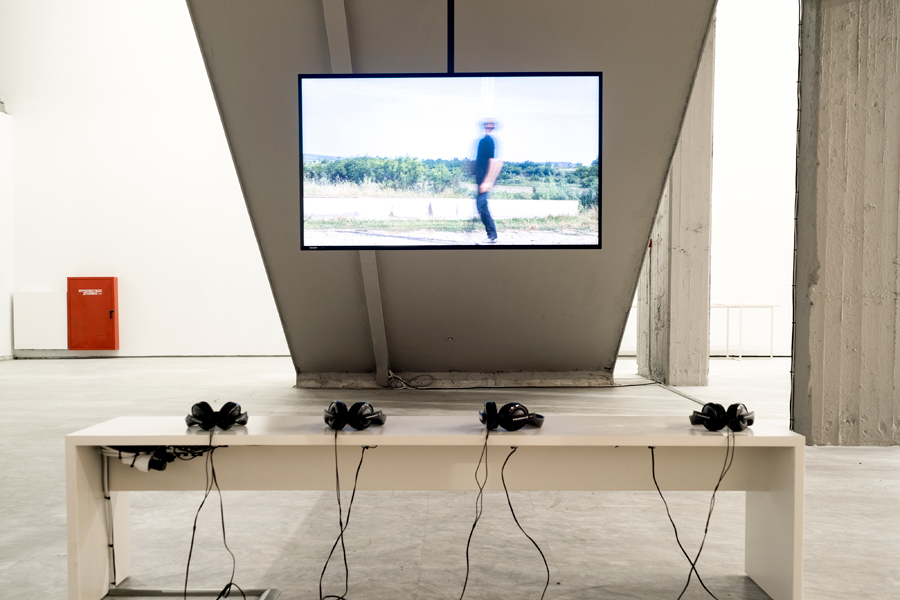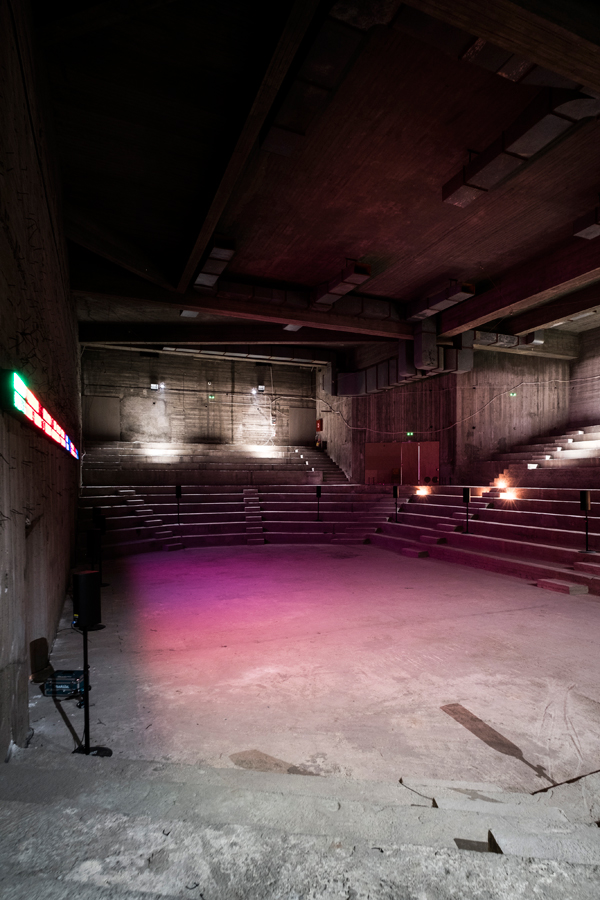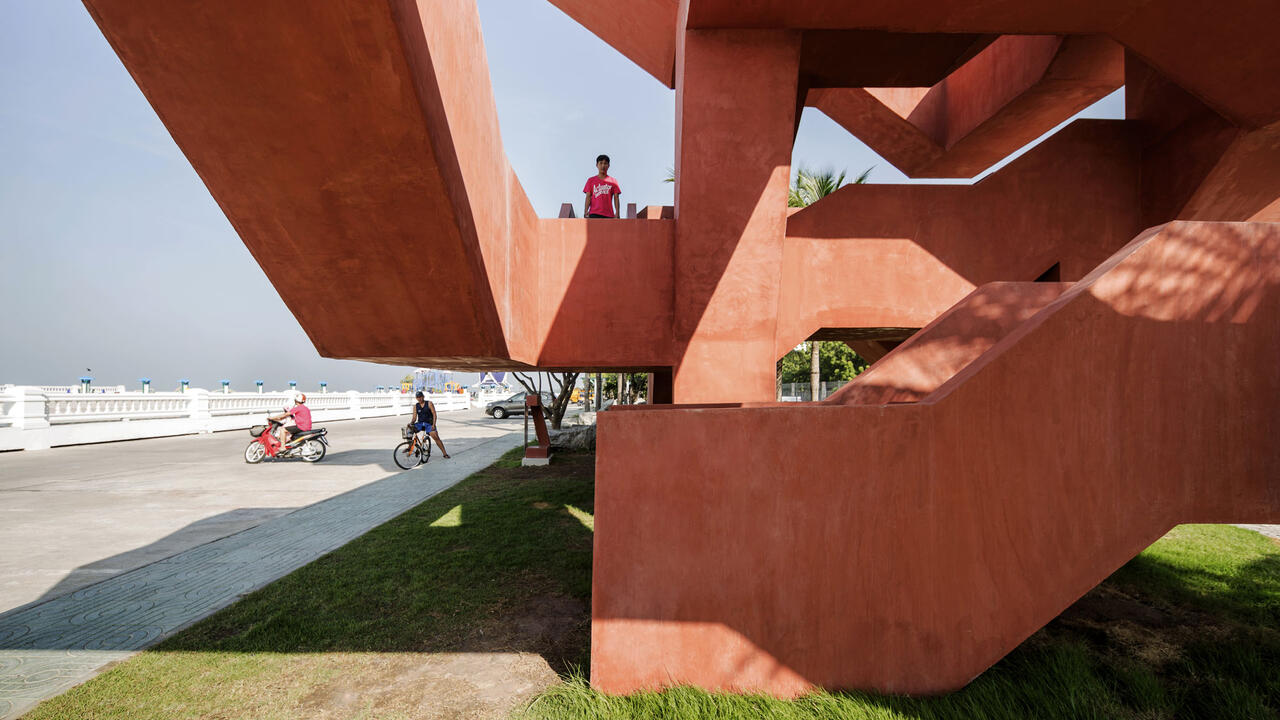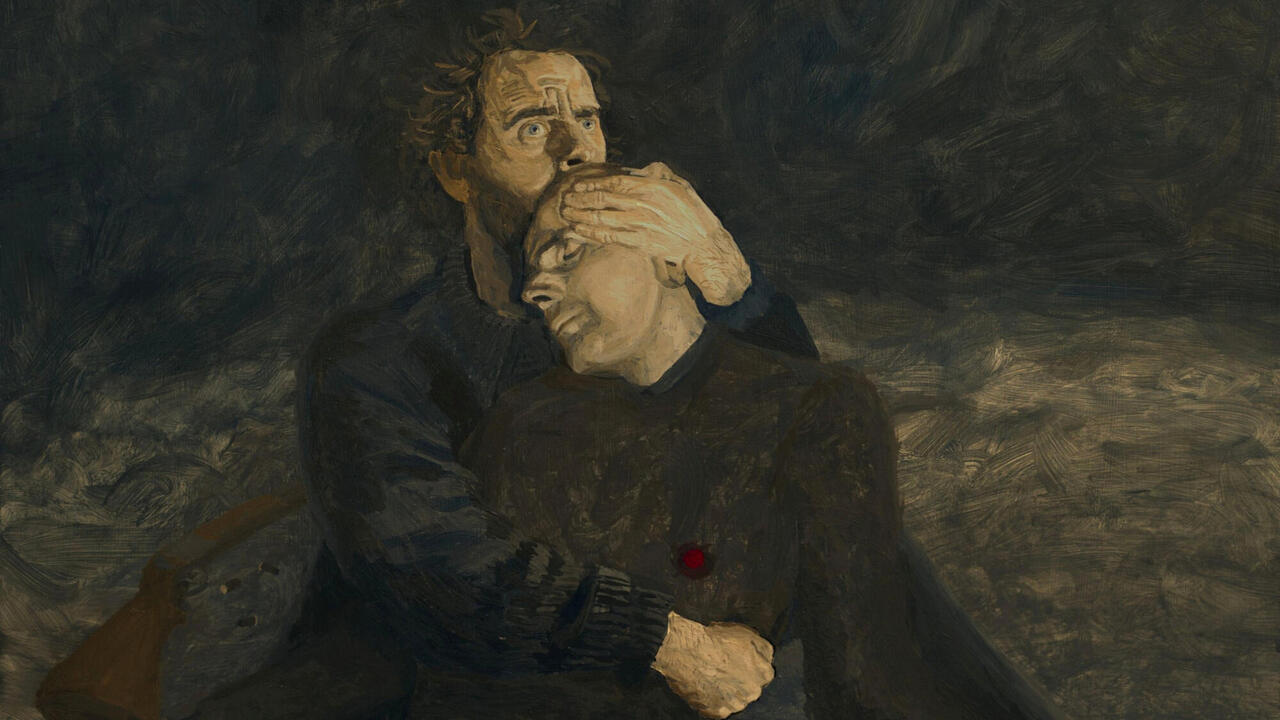documenta 14: Athens Conservatoire
The second in a series of our editors’ initial impressions from documenta 14 Athens, Harry Thorne on the Athens Conservatoire
The second in a series of our editors’ initial impressions from documenta 14 Athens, Harry Thorne on the Athens Conservatoire

In a small room of the Athens Conservatoire, someone is tutting. A tut, a hoot, a ripple, a bark, and then a swarm of utterance descends upon the room. A hush, a fermata, and then we return to silence – there is a mad house, and then there is nothing.
The sound work is Robert Huber’s 2017 realization of the late Greek composer Jani Christou’s Epicycle (1968), and the fact that it remains separate from the original is important here. Towards the end of his career, Christou’s compositions became informed by his concept of the ‘continuum’, an abstract entity that was occurring, ever-evolving, and was open to all that wanted to enter (a testament to this: Christou’s composition was also performed by all of the documenta 14 artists at the opening press conference). Epicycle is visualised here by the many graphic scores, ciphers and sequences on which it is based, and represents not so much a defined, complete work as a conceptual framework for something that can never be fully realised. Similarly, Pauline Oliveros’s Pauline’s Sol, an undated A4 printout marked with four sentences of text that hangs nearby, reads: ‘I make this music here and now with the assistance of all that there is’.

The Greek architect and former Bauhaus student Ioannis Despotopoulos designed the cavernous Athens Conservatoire in 1959, but as a musical institution it has existed since 1871, and accordingly, the transformative capacity of sound provides a welcome leitmotif. Guillermo Galindo’s series ‘Exit’ (2016-17), for instance, comprises a scatty ensemble of homemade instruments constructed from the detritus found at a refugee camp near Kassel. In the adjacent wing, the Turkish artist Nevin Aladağ invites us into her Music Room (2017), an assemblage of household furniture, each item of which has been reimagined and refashioned as a musical instrument. Chair becomes guitar. Desk becomes wind-chime. Stool becomes drum. Each functional object is seen as something wildly alternate, a charming testament to the creative inspiration that can be found in the banalities of the day-to-day. Nearby, Pope.L’s Whispering Campaign (2016-17), installed in various forms across seven Athenian venues, preserves and passes on fragmented narrative artifacts, reinvesting in the art of hearing and being heard. At the Conservatoire, the campaign takes the form of a turquoise safe, which stands unassumingly in a corner. Its door remains locked, its contents out of site, but, if you pass it at an opportune moment, you will hear the dulcet tones of a singer from the southern US emanating from within. The figure himself is absent, his voice distorted over time, but his story is there to be preserved, if you want it.

A number of artists assess the potential ramifications of actively preserving narratives. An example of this comes in the centre of a basement space, where a makeshift school has been constructed. The installation, Dakar-born Pélague Gbaguidi’s The Missing Link. Dicolonisation [sic] Education by Mrs Smiling Stone (2017), comprises walls of hanging paper, each scrawled with scratchy, disjoined figurative drawings made with lipstick, a series of green school desks, a single video and a microphone wrapped in paper. On the desks, placed beneath large sheets of glassine paper, are images captured by the South African photographer Peter Magubane of black figures caught within the violence of the apartheid. In covering these images of suffering – and, fairly transparently, packaging the microphone – Gbaguidi draws attention to the way in which inconvenient legacies of oppression are circumvented – and thus preserved – through education systems and therefore official histories. If we are ever to truly learn, Gbaguidi suggests, we must remove the paper and confront the worst things that we have done.
Kurdish Iraqi artist Hiwa K’s new film, Pre-Image (Blind as the Mother Tongue) (2017), is a journey of self-discovery, or self-rediscovery. The artist walks – through fields, through temples, through estates – with a mirrored stick on his nose, tracing the route that he once walked from Turkey to Athens before arriving in Rome – when he was forced to flee his homeland. While a meditative voiceover, nestled comfortably between fact and potential fiction, describes the artist’s troubled childhood (‘I survived her attempt to abort me three times’), the mirrors allow him to gain footing on a world, scarred by a personal history of migration. ‘To remember’, the voiceover reads, ‘sometimes you need other archaeological tools’.

While the varied presentation at Athens Conservatoire allows itself to touch upon the idiosyncrasies of our current context – politics, identity, immigration, neoliberalism – as a whole it can perhaps be taken as a hopeful reinvestment in community, conversation, and the processes of questioning. An untitled, undated work by André du Colombier pays homage to this importance of inquiry. Under five identical photographs of an unknown island runs a handwritten text: ‘If if if if si’. If you flip the word if, spelled out in cursive, the word closely resembles si (yes). Likewise, if you repeatedly question, doubt, and consider, you will find something that closely resembles affirmation.
This is the second in a series of frieze magazine editors’ first impressions from documenta 14 Athens. Check back for reviews of the other four main venues.
Main image: Pope.L, Whispering Campaign (2016–17), installation view, Cantina Social, Athens, documenta 14. Photograph: Freddie F





















